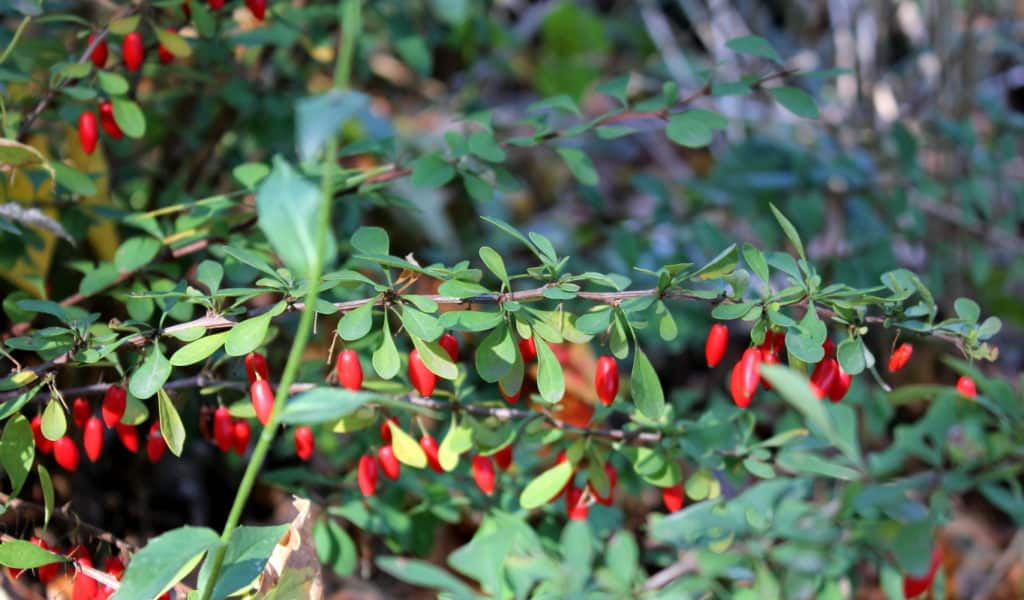
By Kathy Romans Hall, Rutland Chapter UVM Extension Master Gardeners
The Rutland Chapter of UVM Extension Master Gardeners would like to share some information about a common ornamental plant that you may have on your property. We have concerns about the Japanese barberry, a spiny shrub that in the past 30 years became a popular landscape plant, chosen for its red autumn foliage and red berries in winter — and because it is deer resistant. The plant has virtually no predators or natural deterrents, and its thorns put off most animals that might graze on it.
Why is Japanese barberry a problem?
Japanese barberry is originally from Asia, and consequently does not have natural enemies or competition in our region. It has come to the attention of hunters, foresters and gardeners because, thanks to birds dropping seed in the forest, it has invaded the edges of forests and woodland clearings, creating thorny impenetrable underbrush that forces out the natural understory plants and animals. Any time we allow an invasive to take over in this manner, it alters the ecosystems for our native birds and animals normally living there, disrupting their habitats.
The attractive berries of the barberry are not nutritious, and birds, especially migratory birds, innocently fill up on what studies have shown to be equivalent to junk food.
And most importantly: Japanese barberry is a haven for ticks and deer mice that carry ticks. According to the University of Connecticut, “areas with a lot of Japanese barberry often have more of those ticks…responsible for Lyme disease.” This problem has been confirmed by other studies, and the hazard of tick-infested shrubs is prompting many gardeners to eradicate all Japanese barberry from their yards. Barberry has earned the nicknames of “tick nursery” and “tick magnet.”
How to remove barberry bushes
Protect yourself with long sleeves and heavy gloves. Ideally, remove in early spring, before it flowers. Cut away as many branches as possible and put them into a sturdy black garbage bag for disposal. The root system is not deep, but there can be many fibrous roots. Remove as much of the root system as possible, so it cannot re-sprout. Repeated digging and cutting back may be necessary. However, some gardeners have had the good luck of simply sawing off the trunk of the shrub very close to the soil, and the plant did not come back.
Good replacement plants
To have the red leaves that the barberry produces in fall, many people have replaced the shrub with blueberry bushes, understanding that at least two bushes must be planted for proper pollination.
UVM’s Extension Professor Dr. Leonard Perry recommends cultivars of weigela (Weigela florida), and old-fashioned shrub roses, especially ones sold as “own root” roses. He also suggests winterberry and inkberry holly if berries are important and the leaf color is not.
Finally, chokeberries (Aronia) are hardy, have white flowers in spring and red berries and reddish leaves in fall.
For more info contact UVM Extension Service at 800-639-2230.




